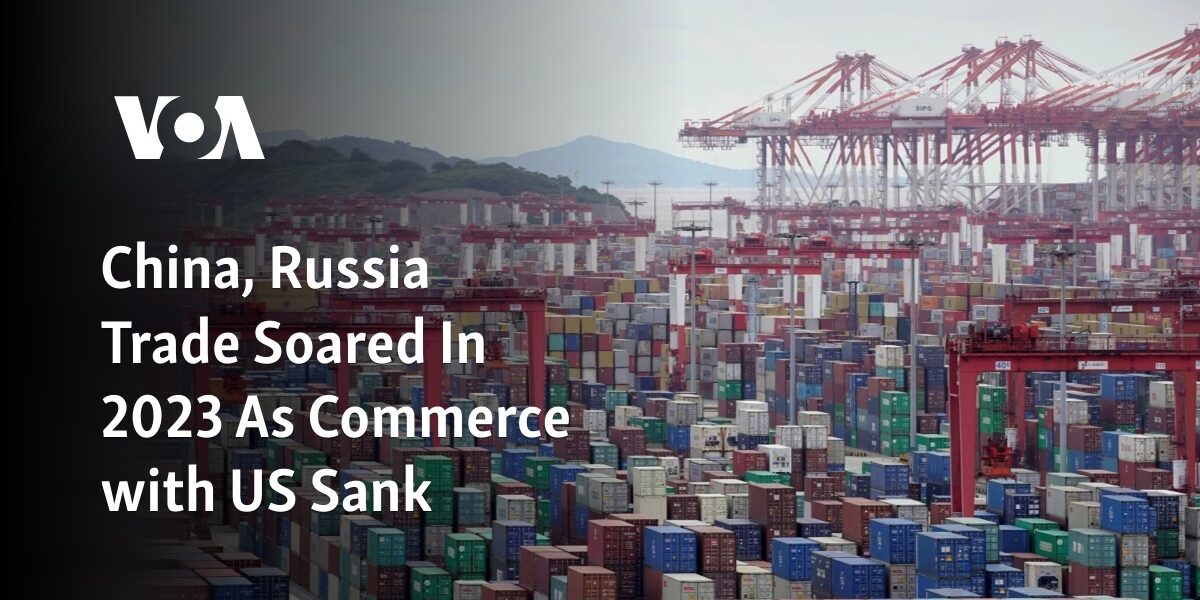In 2023, trade between China and Russia experienced a significant increase while commerce with the US declined.

In 2023, according to official data from Beijing, trade between China and Russia reached a peak, while trade with the United States declined for the first time in four years due to geopolitical tensions.
According to customs data, the trade between China and Russia exceeded $240 billion, surpassing the target of $200 billion established during bilateral discussions last year.
This statistic represents the strengthening relationship between the two nations following Moscow’s 2022 invasion of Ukraine, both politically and economically.
China has faced backlash from Western nations for its position on the conflict in Ukraine, asserting its neutrality.
It has declined to condemn the invasion by Moscow.
According to the data, the trade figures showed a 26.3% rise compared to the previous year.
On the other hand, there was a decrease in trade between the United States and China, marking the first time since 2019.
Trade with the United States amounted to $664 billion in the previous year, showing a decrease of 11.6% from 2022.
At a press conference, Wang Lingjun, the deputy minister of the General Administration of Customs, stated that China’s trade will encounter greater challenges in 2024.
He stated that the external environment is becoming more complex, severe, and uncertain, and we must overcome challenges and put in more effort to drive the growth of foreign trade.
The data also indicated a 4.6% decline in China’s exports compared to the previous year, marking the first decrease since 2016. Additionally, imports saw a 5.5% decrease.
On Friday, there were discouraging economic statistics on the national level. The National Bureau of Statistics (NBS) reported that deflation in China persisted for the third consecutive month in December.
The CPI decreased by 0.3% compared to the previous year.
In July of 2021, China experienced deflation for the first time, with prices continuing to decrease since September after a temporary increase in the following month.
Bloomberg’s analysts predicted a 0.4% decrease for the previous month, after a decline of 0.5% in November.
Although deflation may indicate lower prices for goods, it can be a danger to the overall economy as consumers may delay making purchases in anticipation of even lower prices.
When there is not enough demand, businesses may have to reduce their production, stop hiring, or let employees go. They may also have to lower prices for their current inventory, which can decrease profits even though expenses stay the same.
In contrast, the inflation rate in the United States was 3.4% in December.
The inflation rate in China for the entirety of 2023 increased by an average of 0.2%, while other major economies experienced a rise in prices once more.
The National Bureau of Statistics (NBS) also reported a 2.7% decrease in producer prices, marking the 15th month in a row of continuous decreases.
In November, the PPI index, which indicates the expense of goods produced by factories and offers a glimpse into the state of the economy, decreased by 3%.
Source: voanews.com




